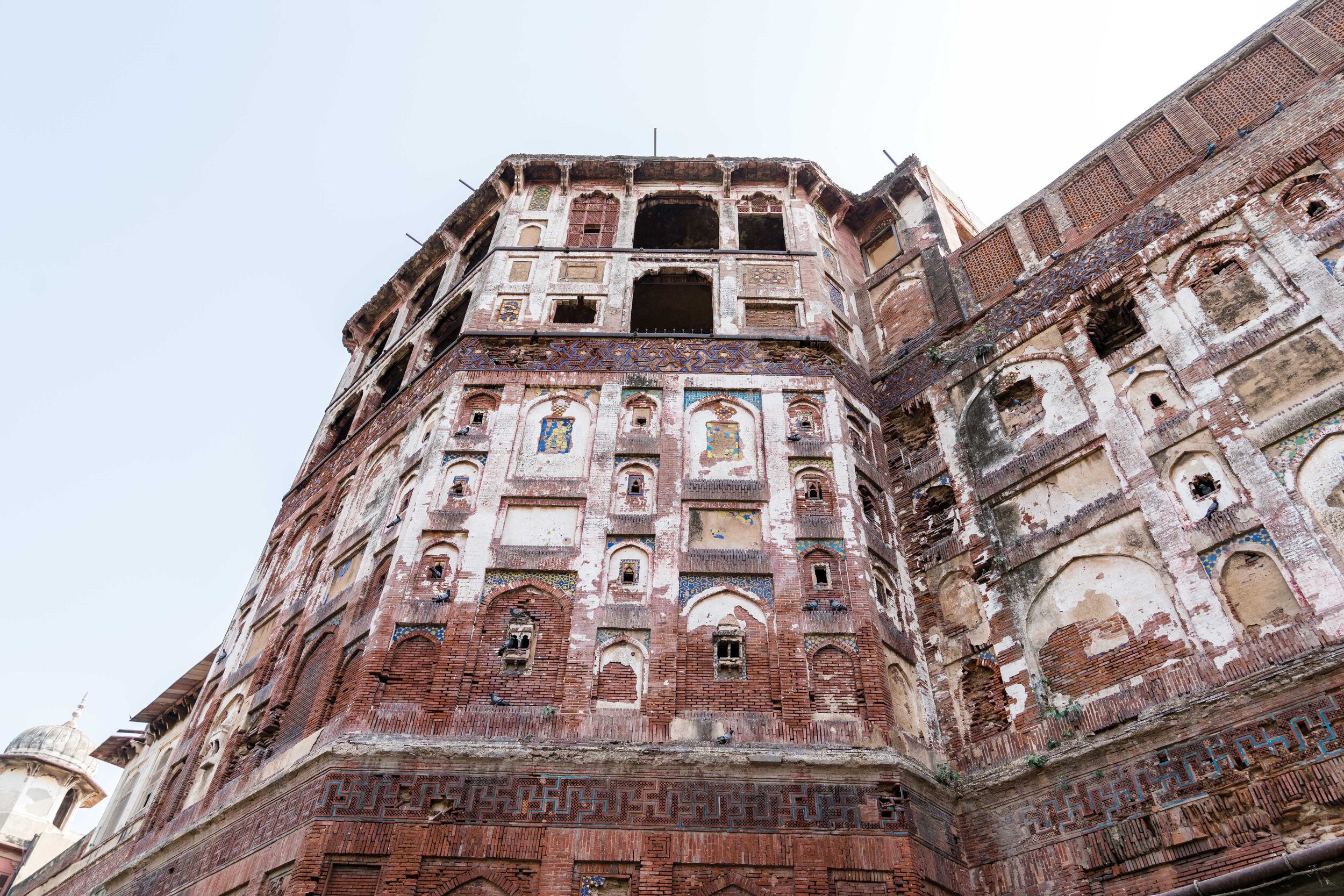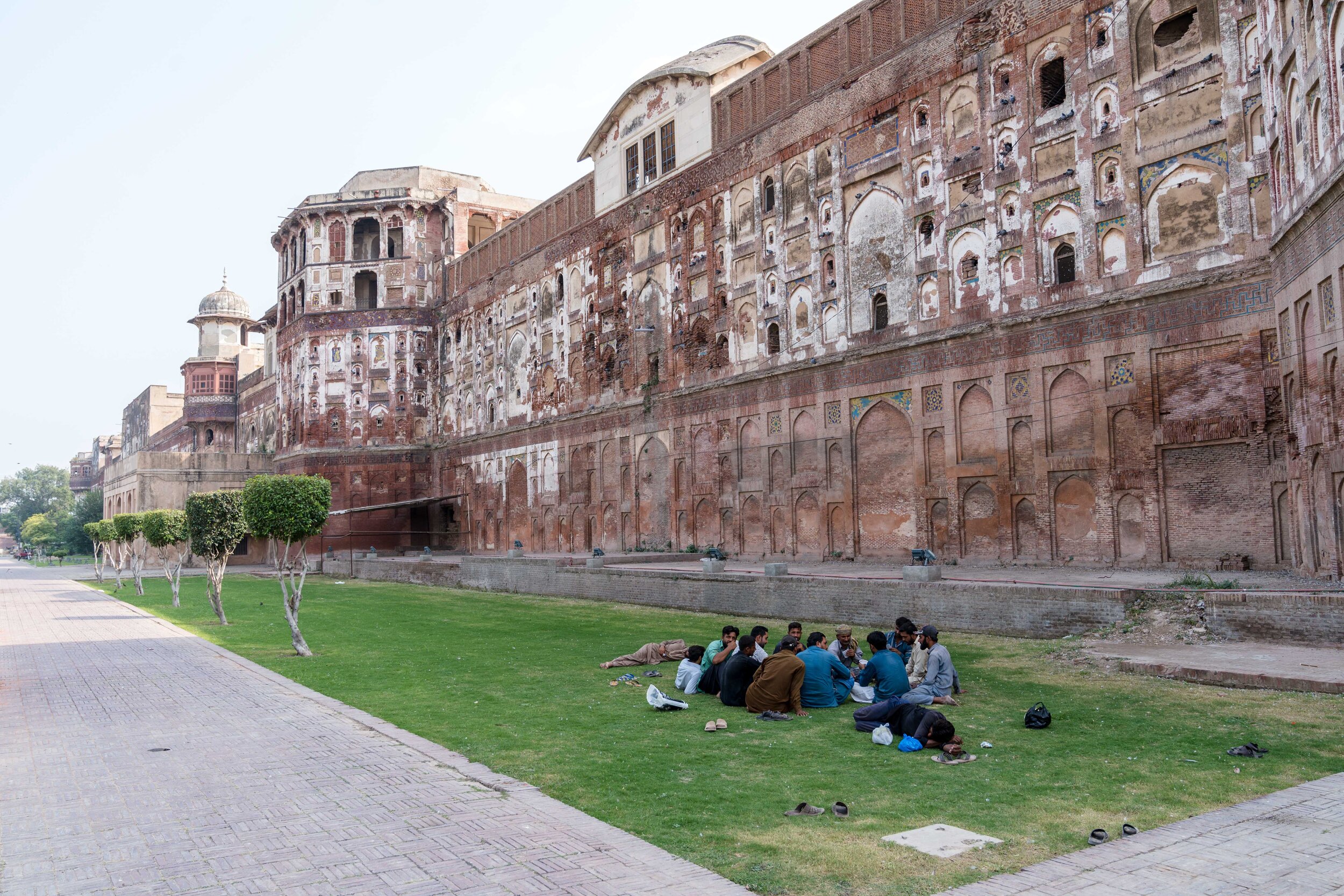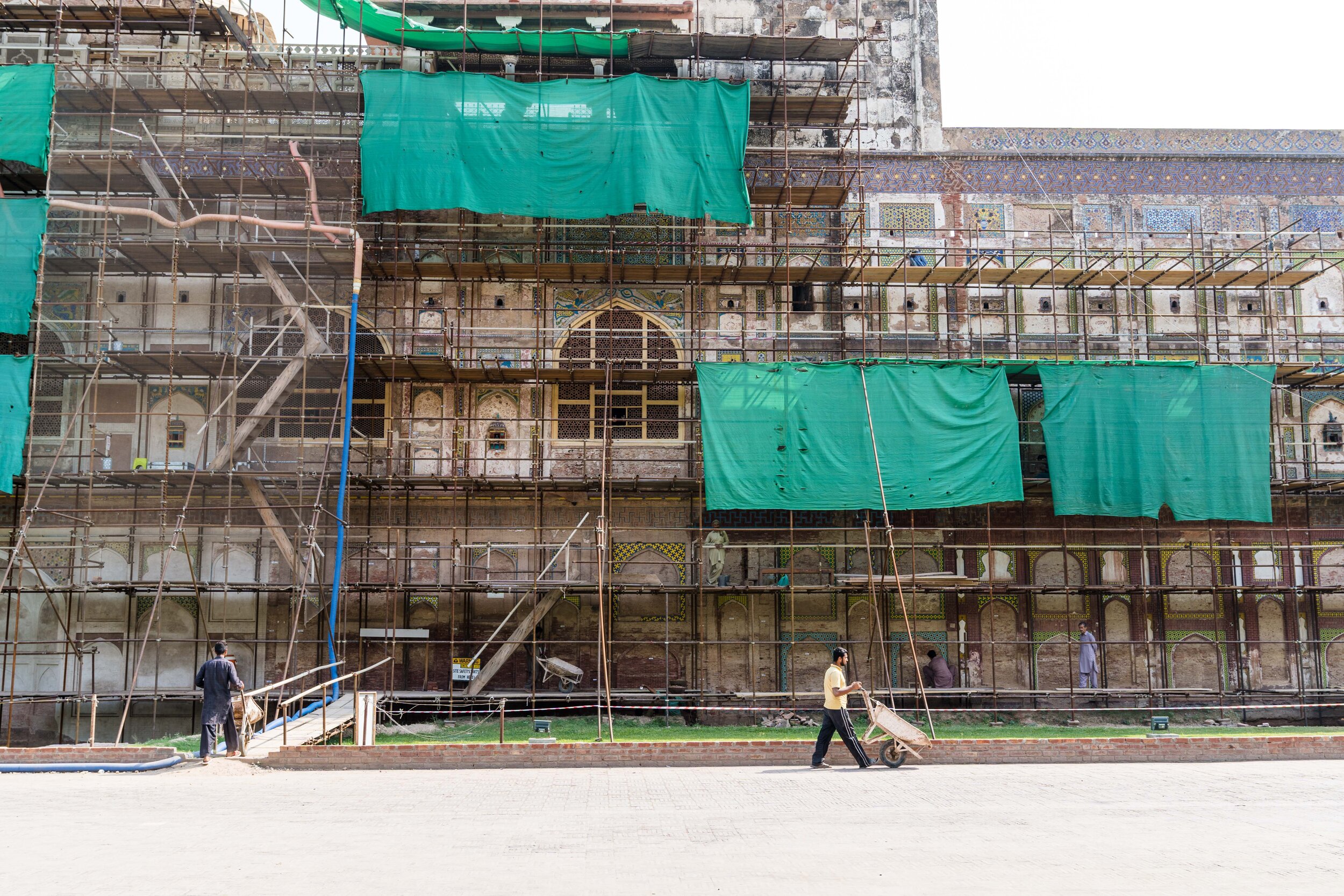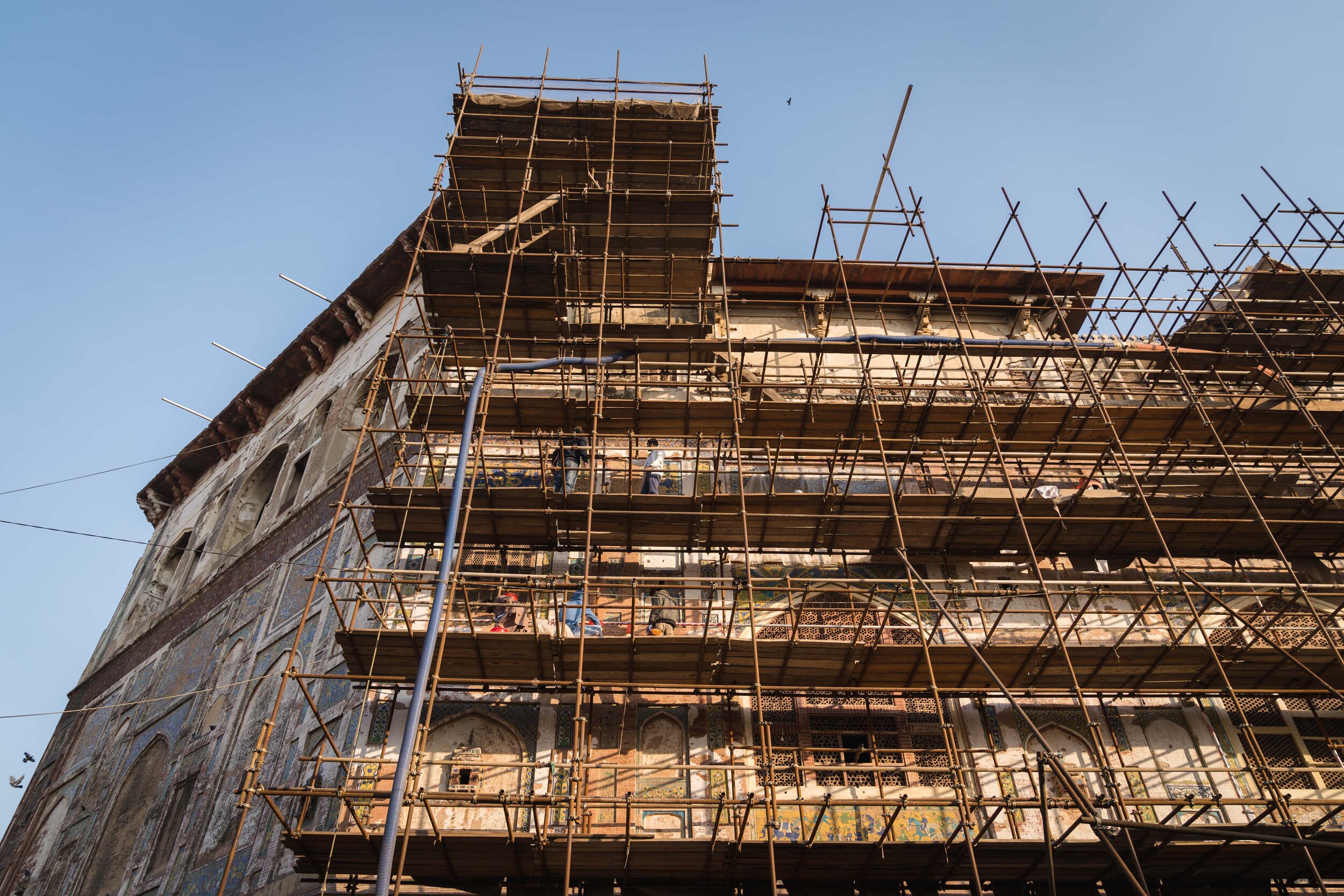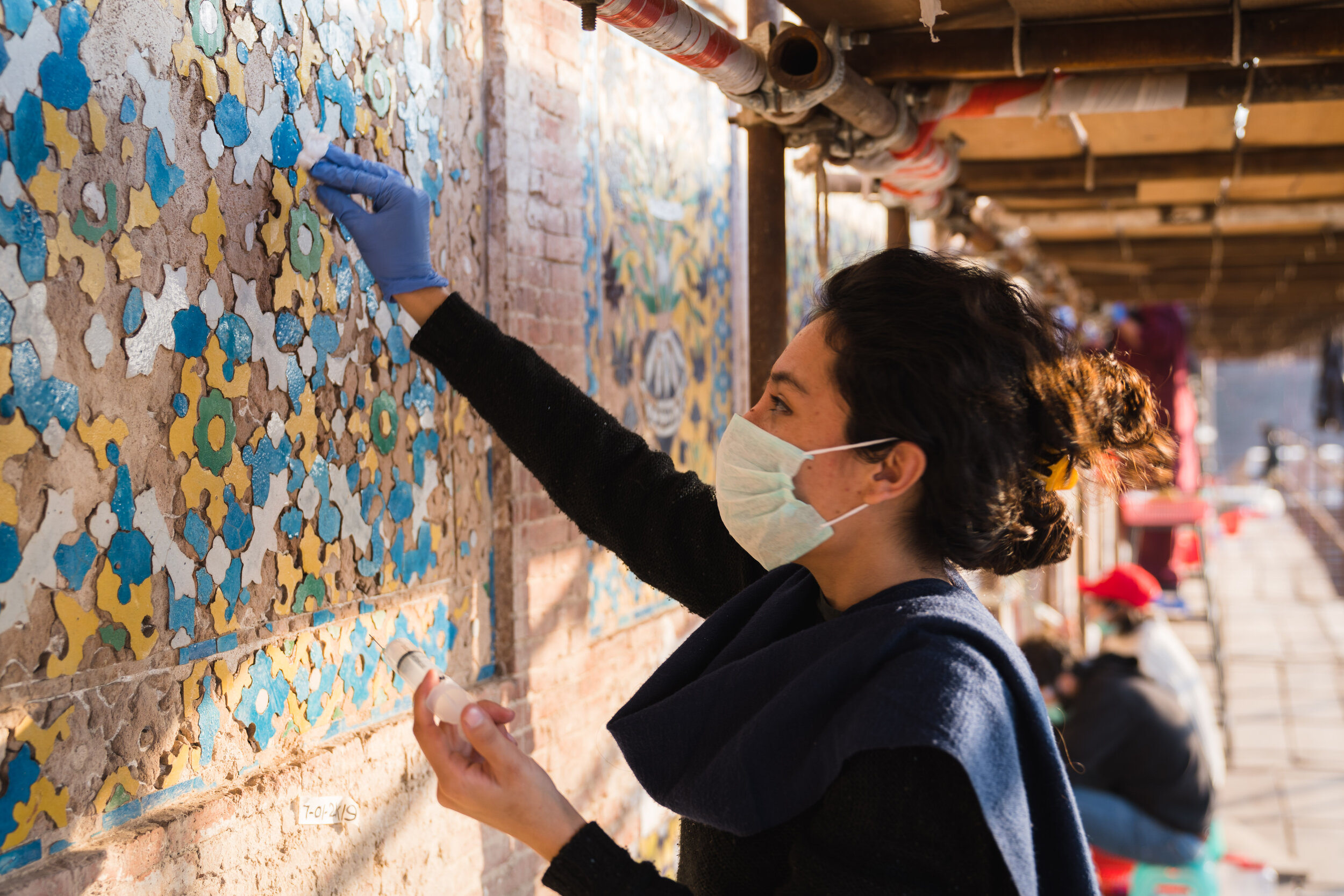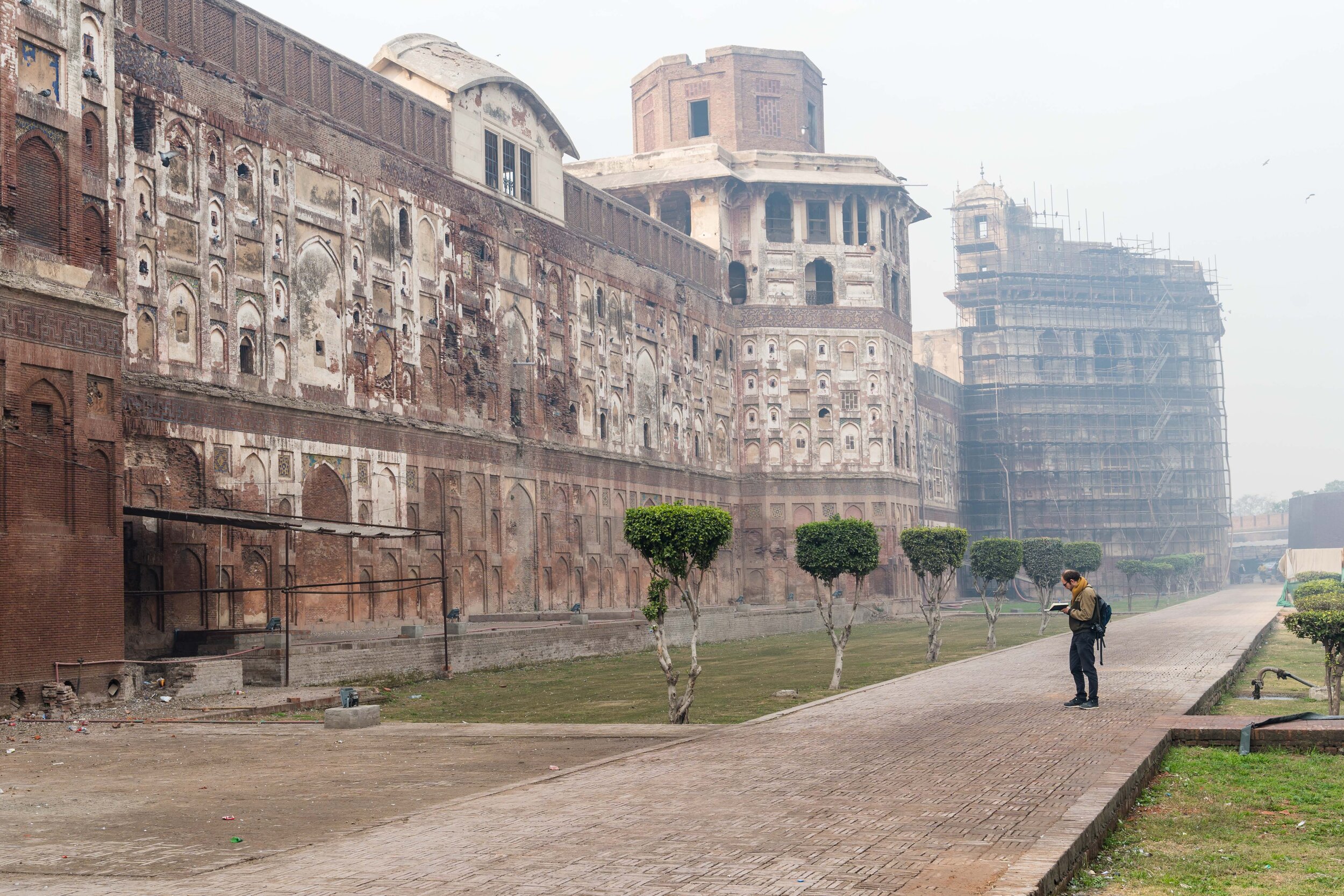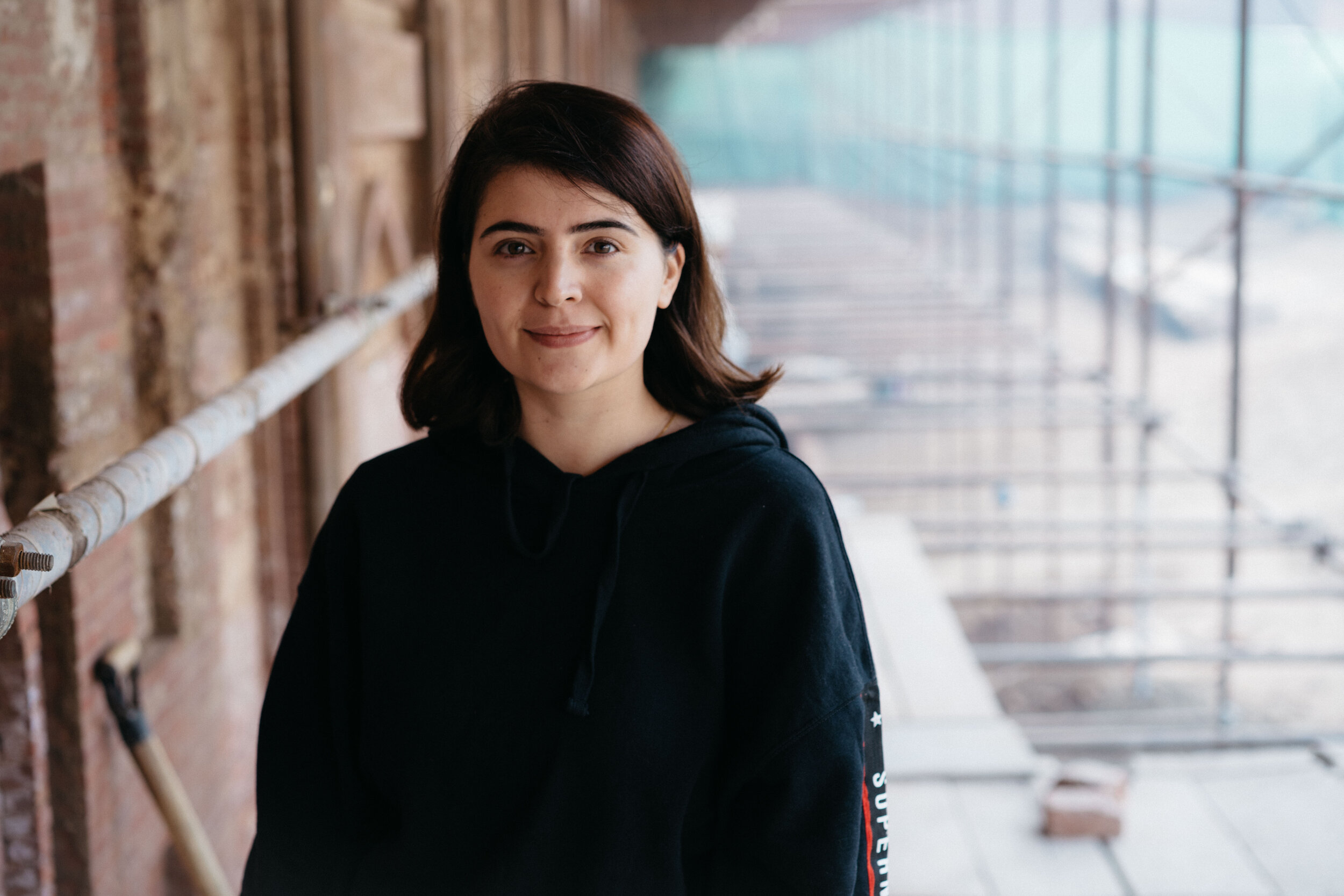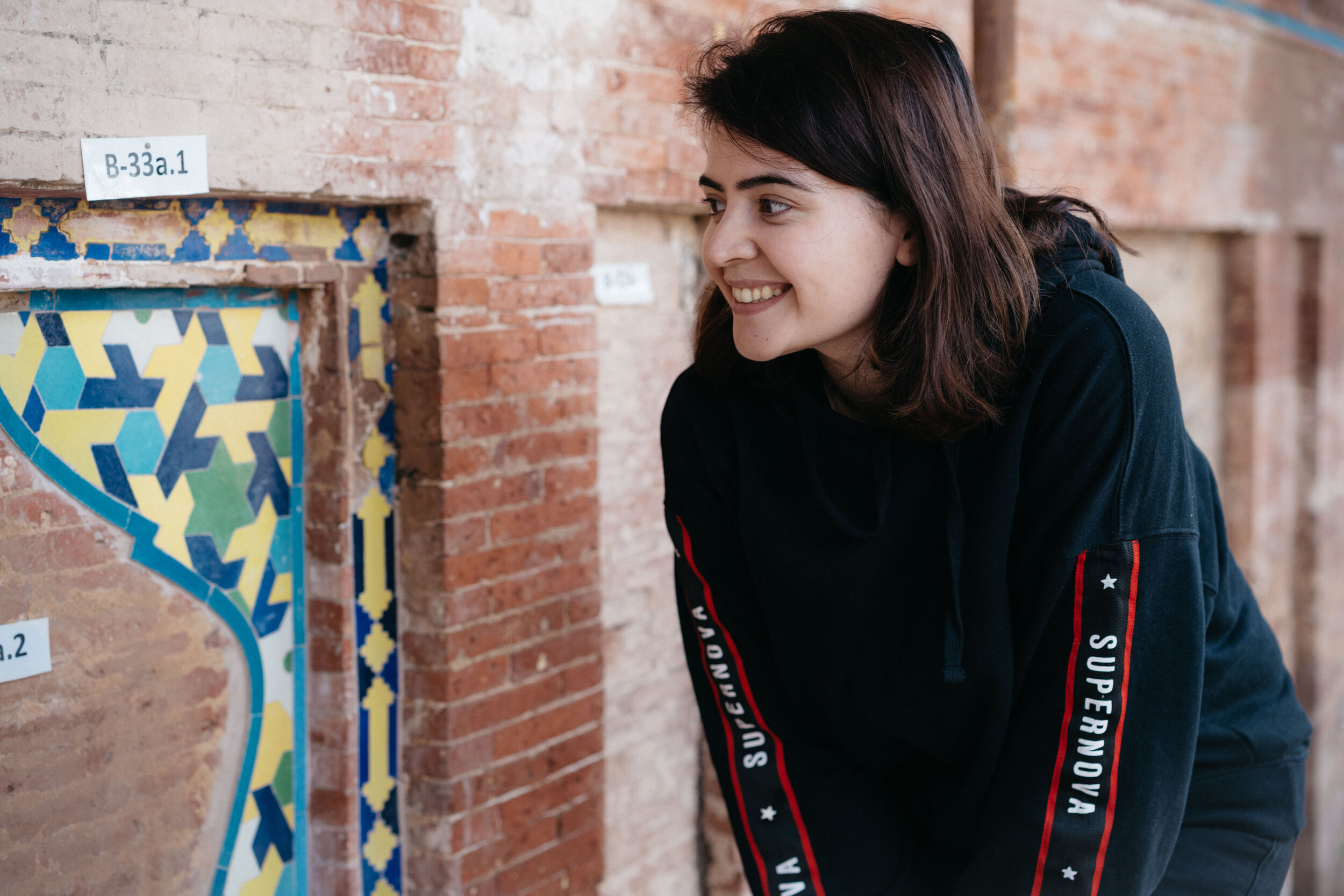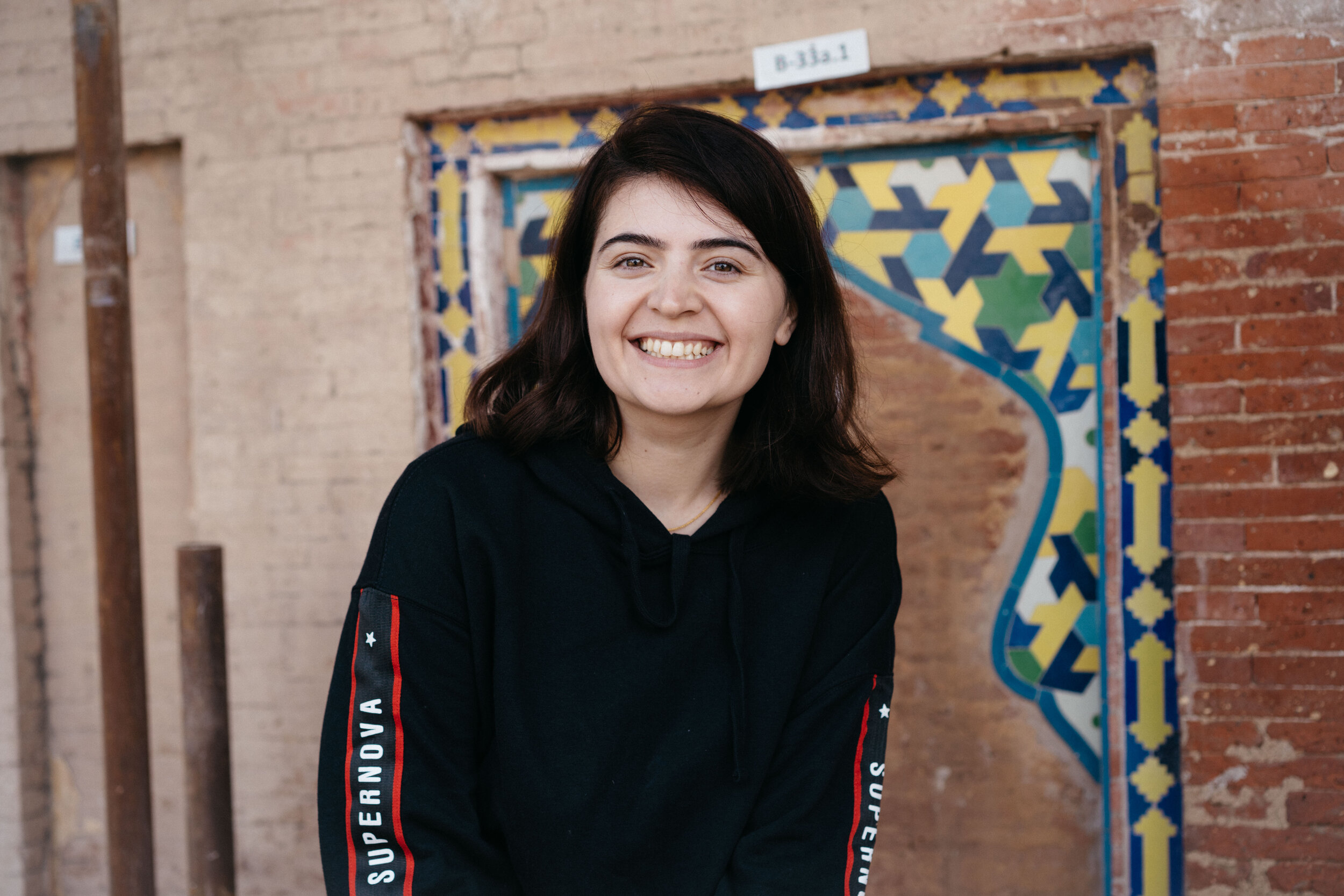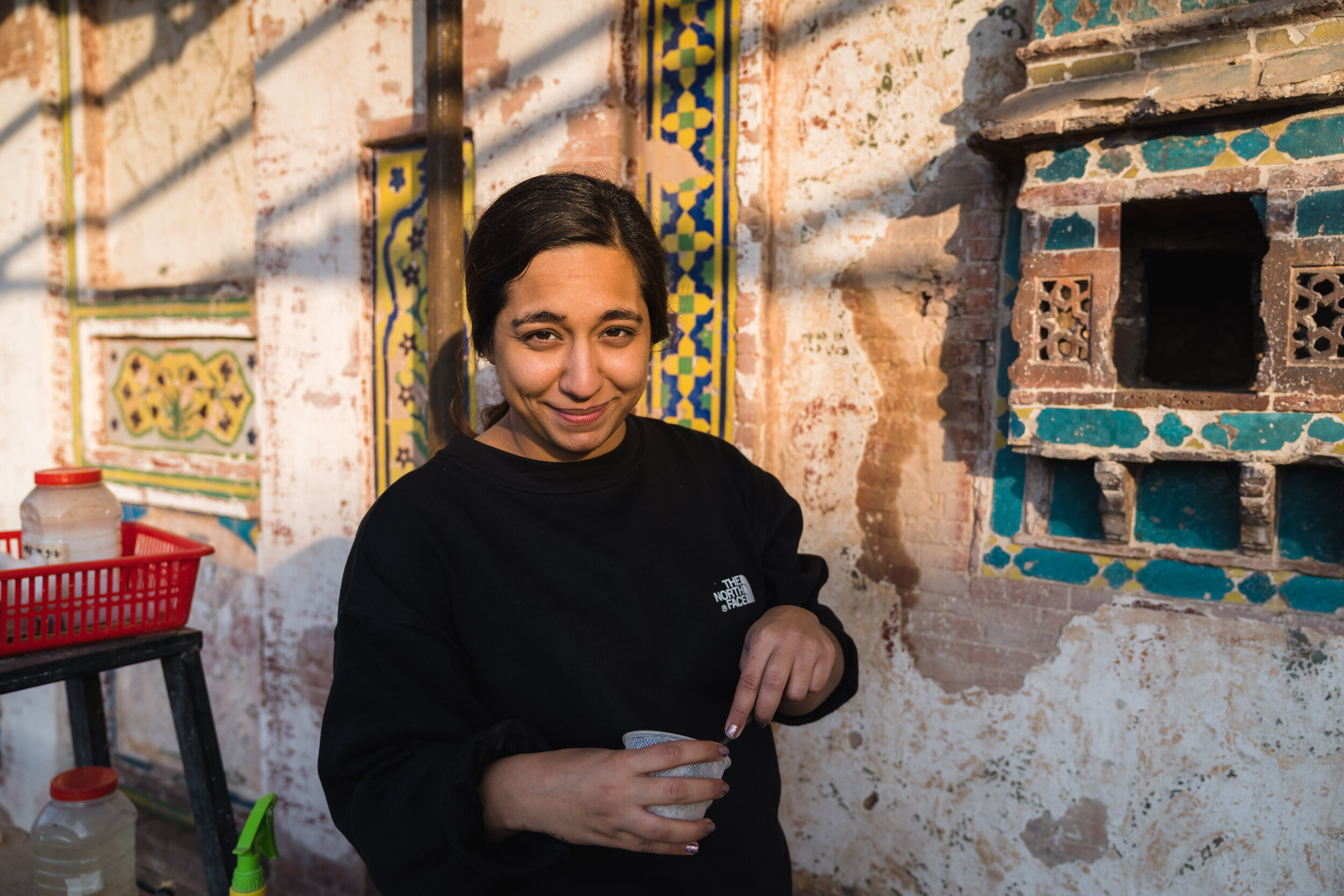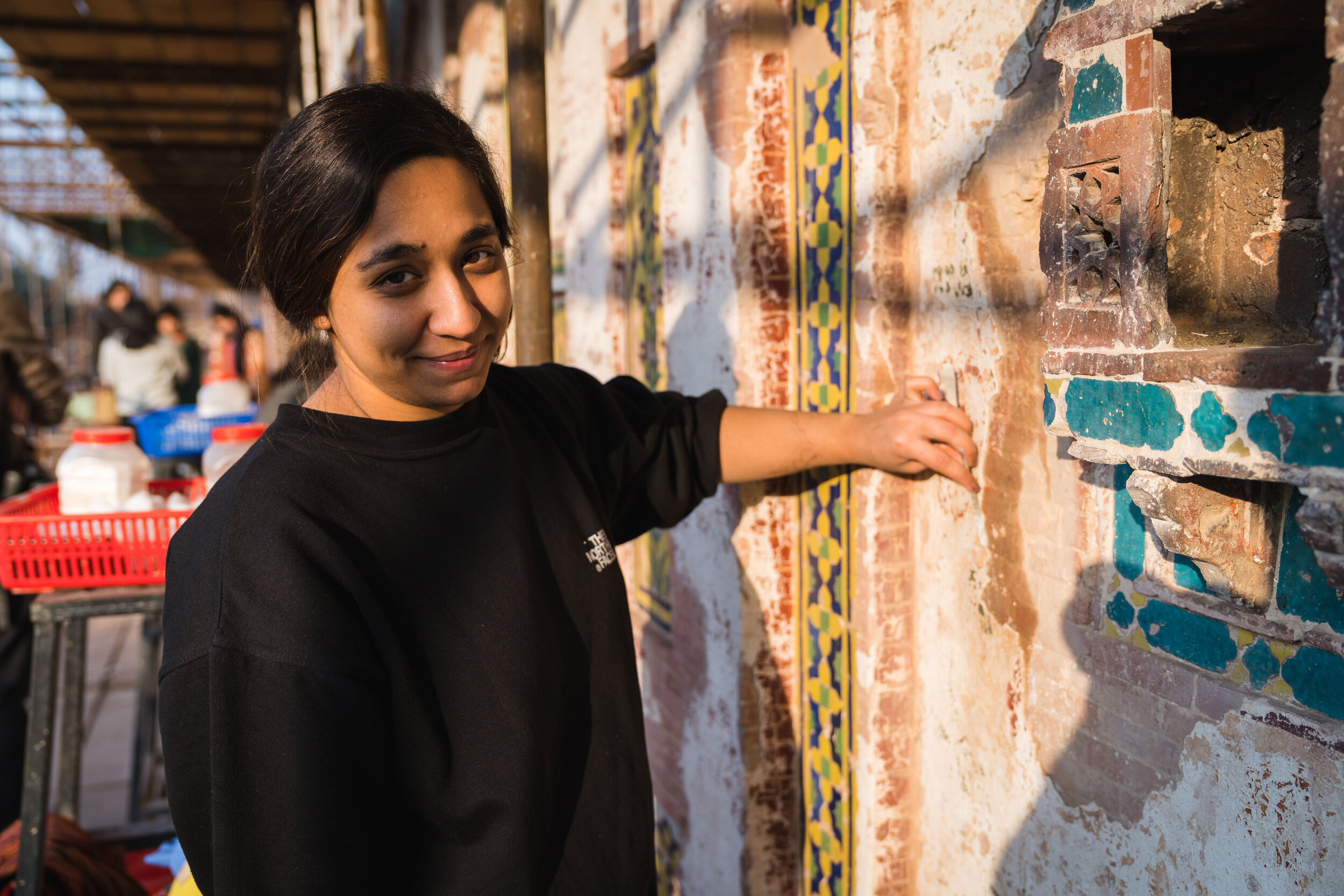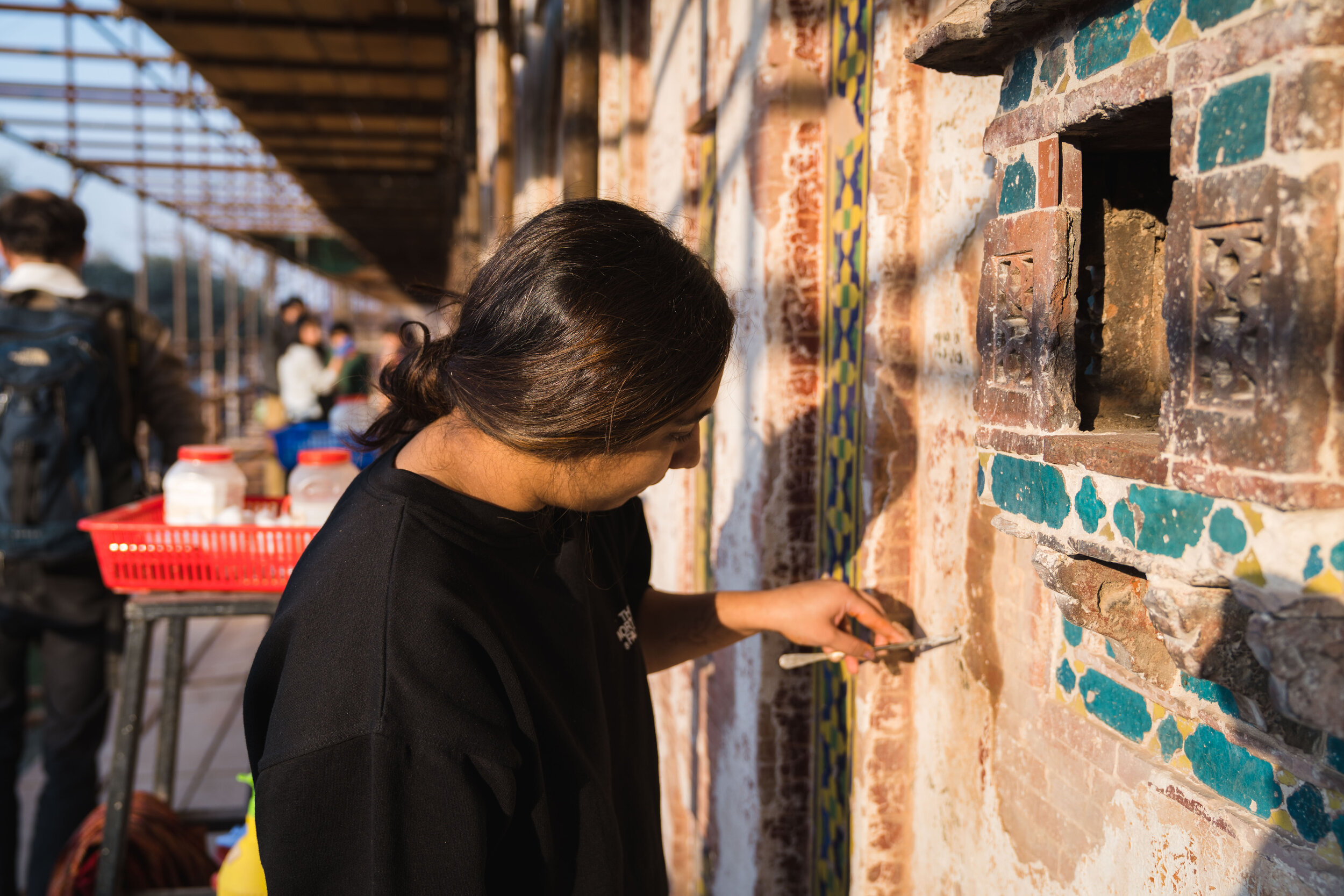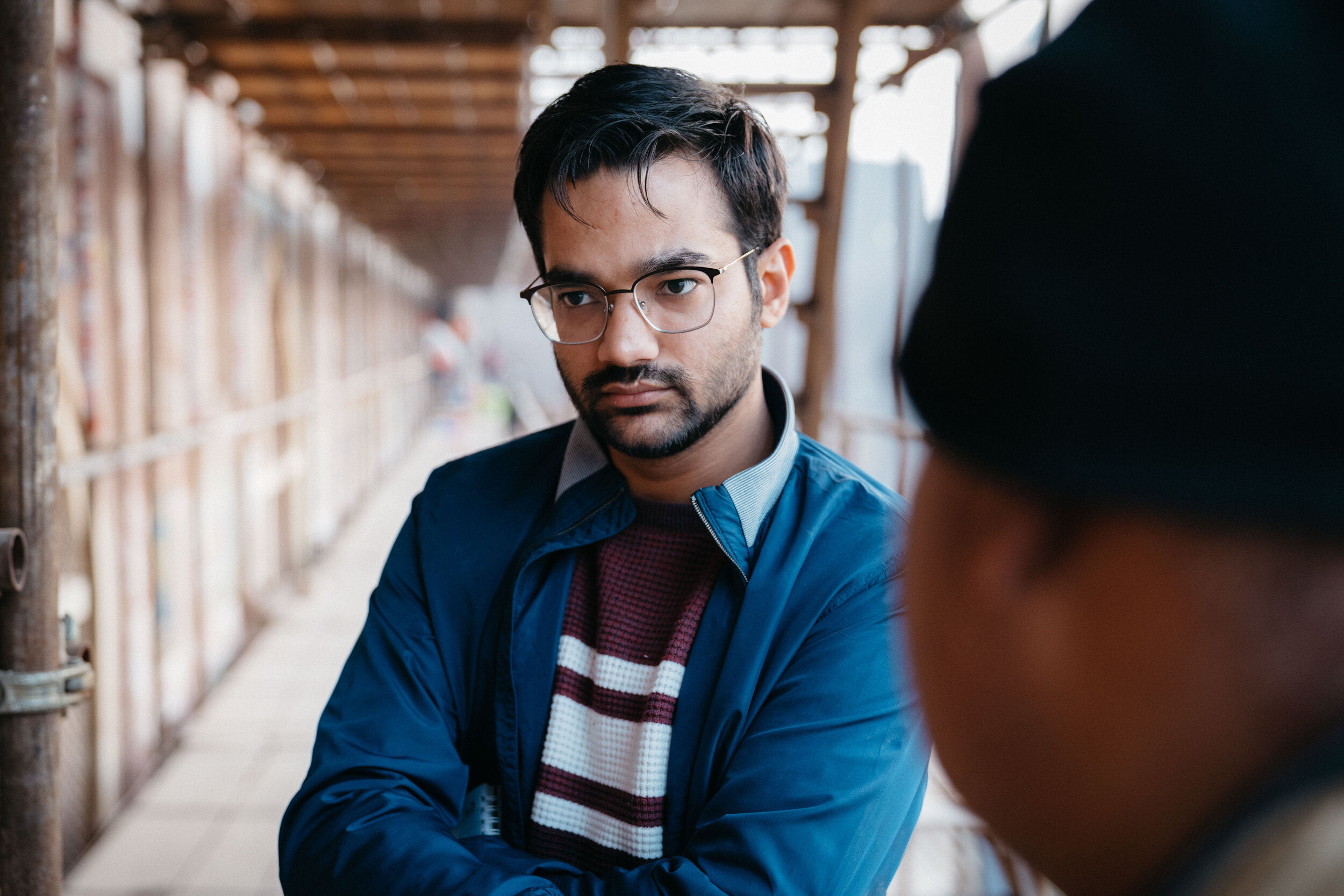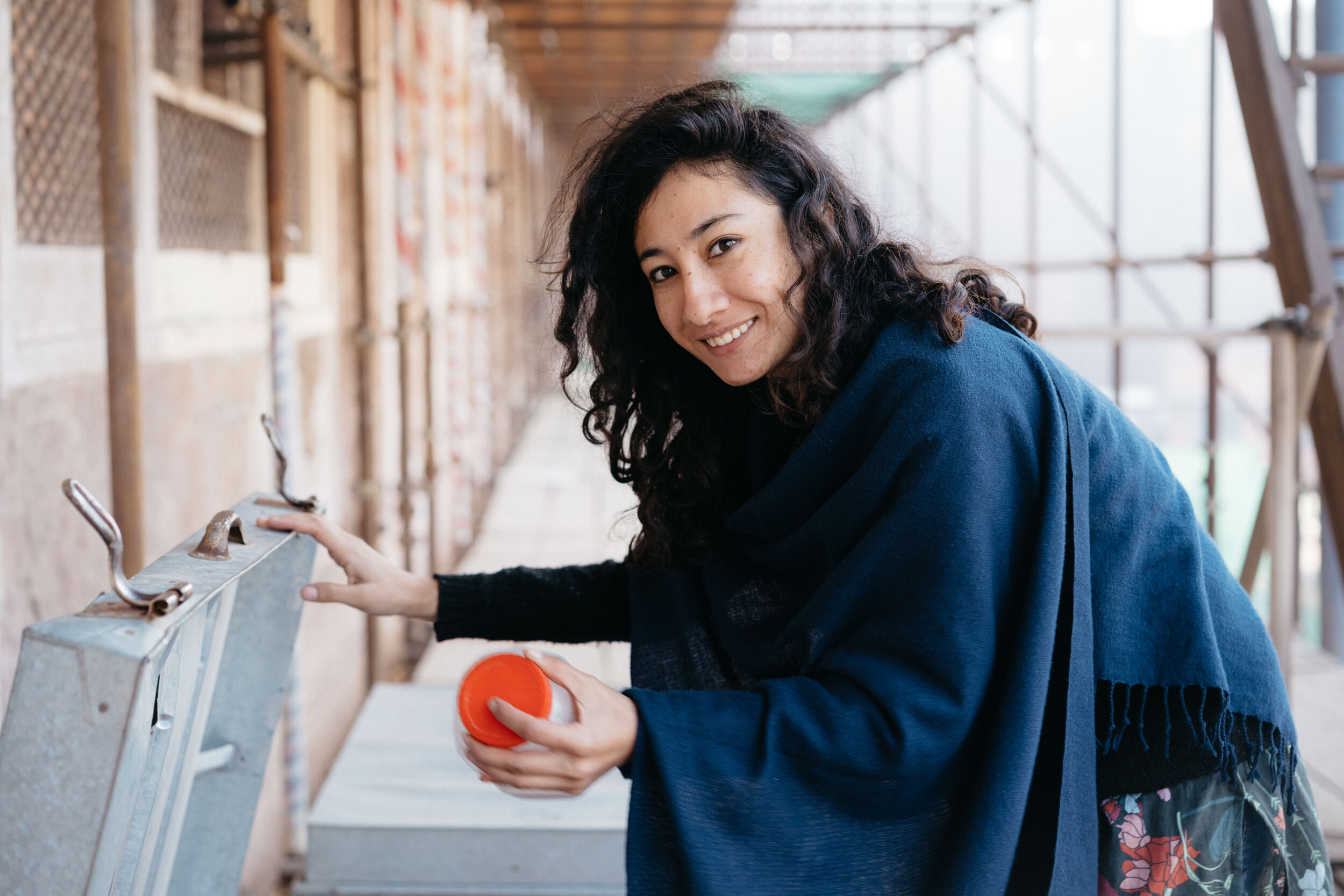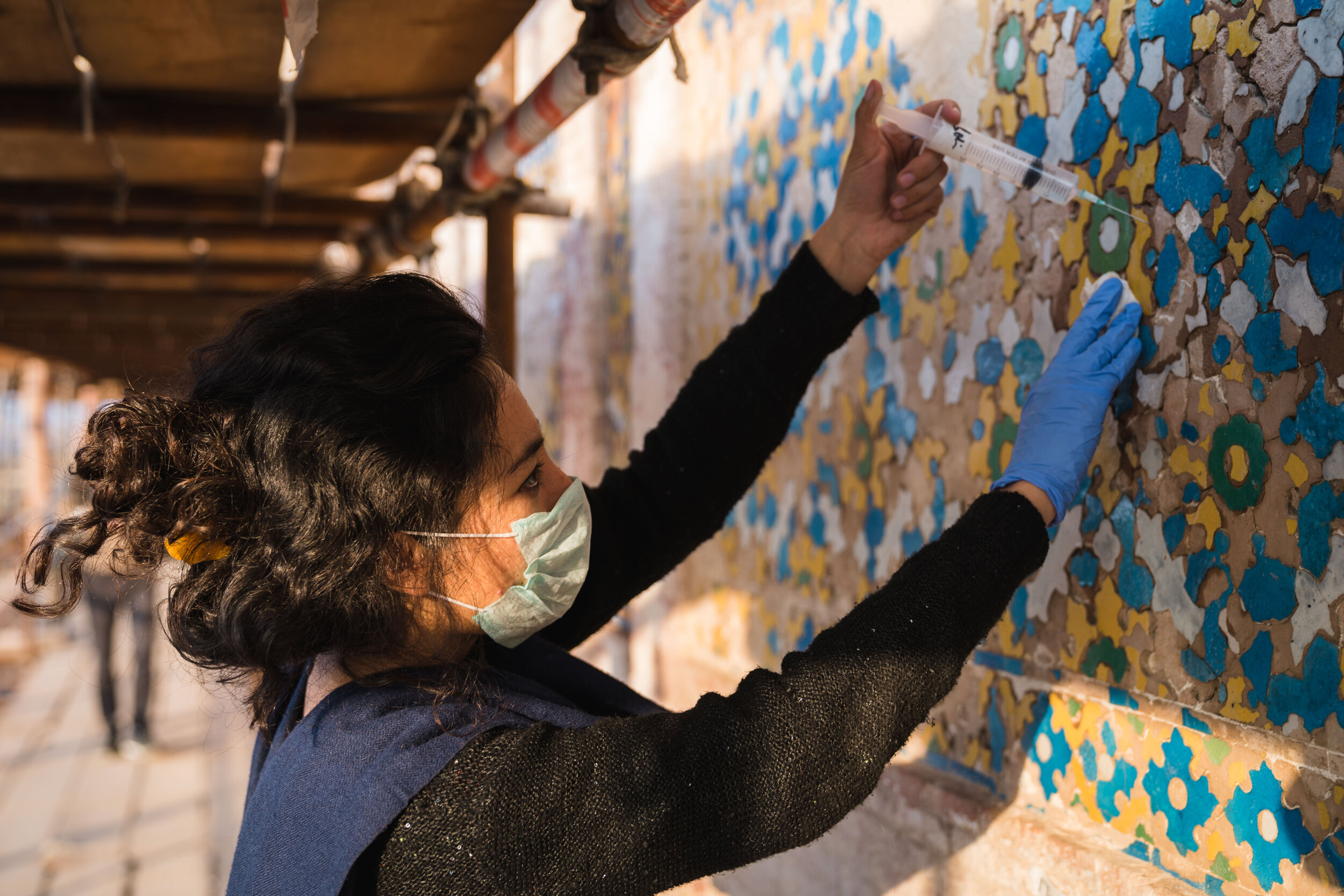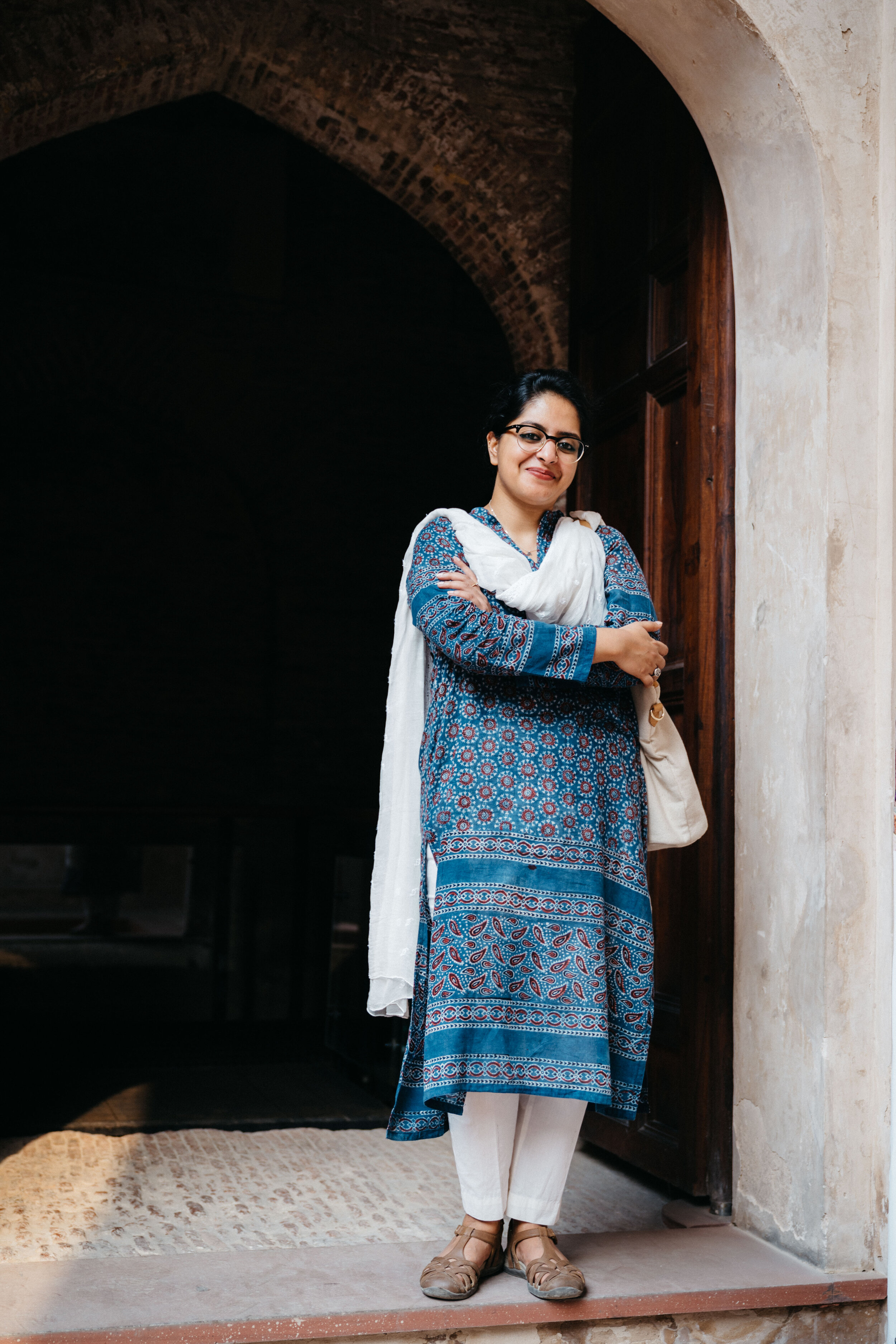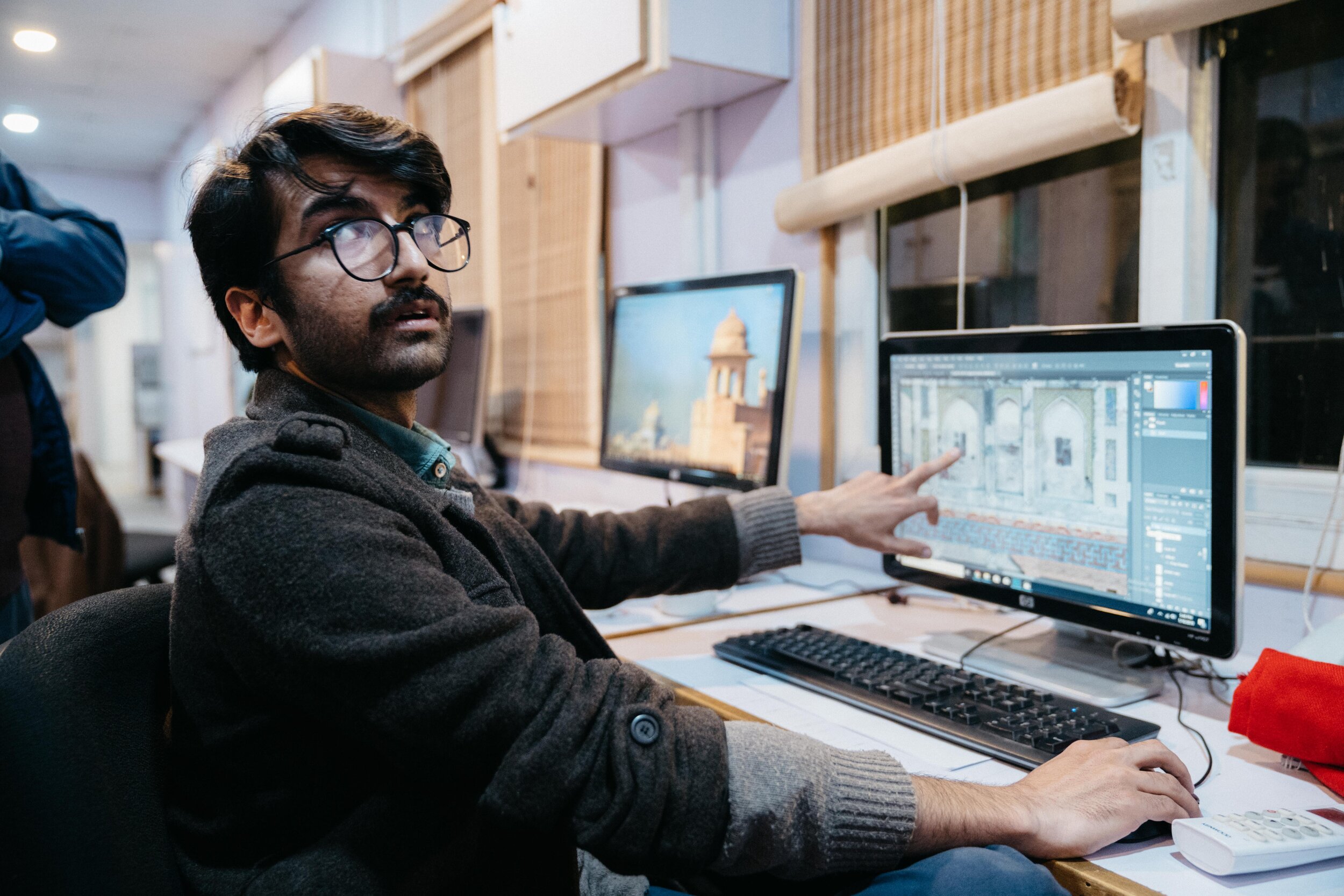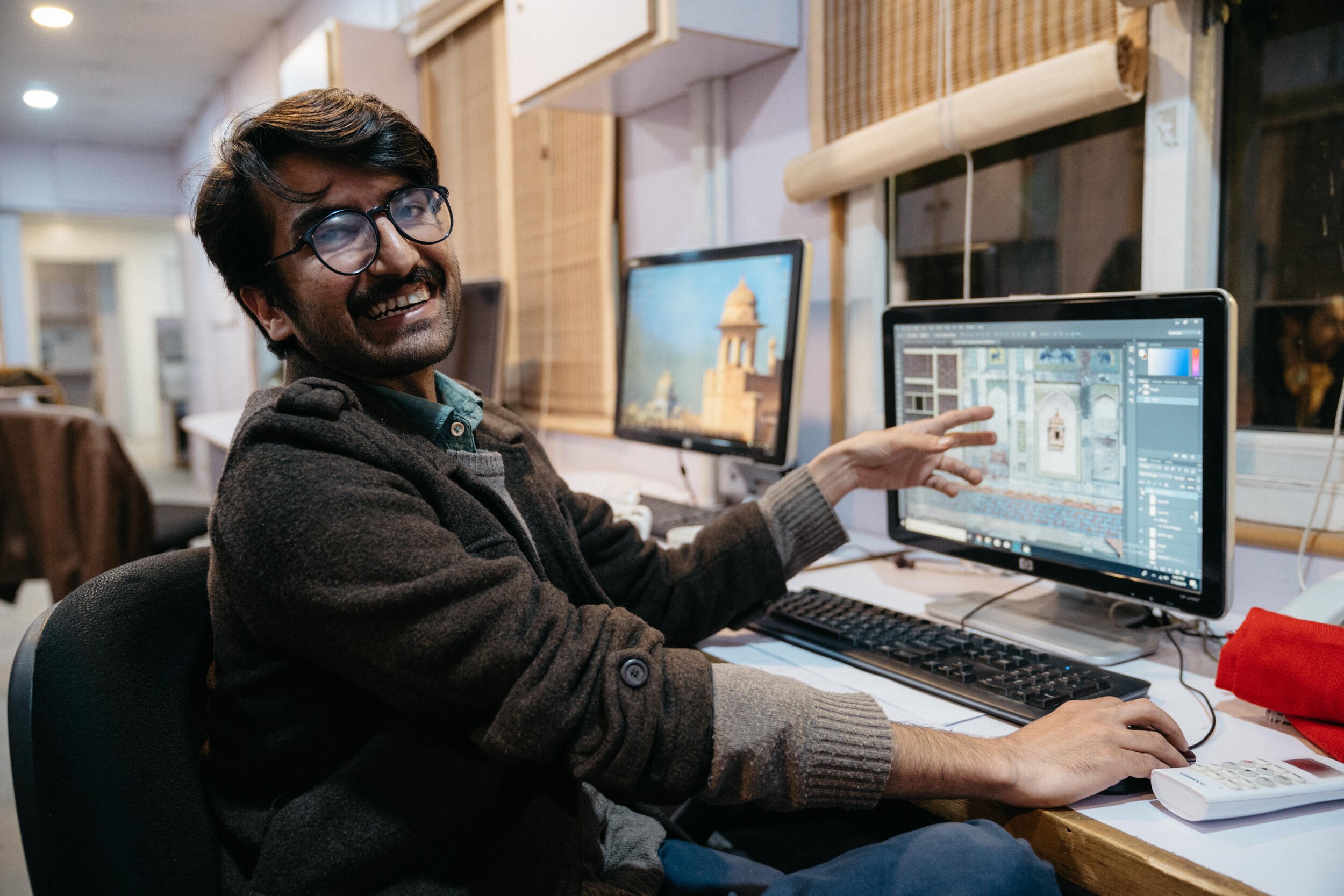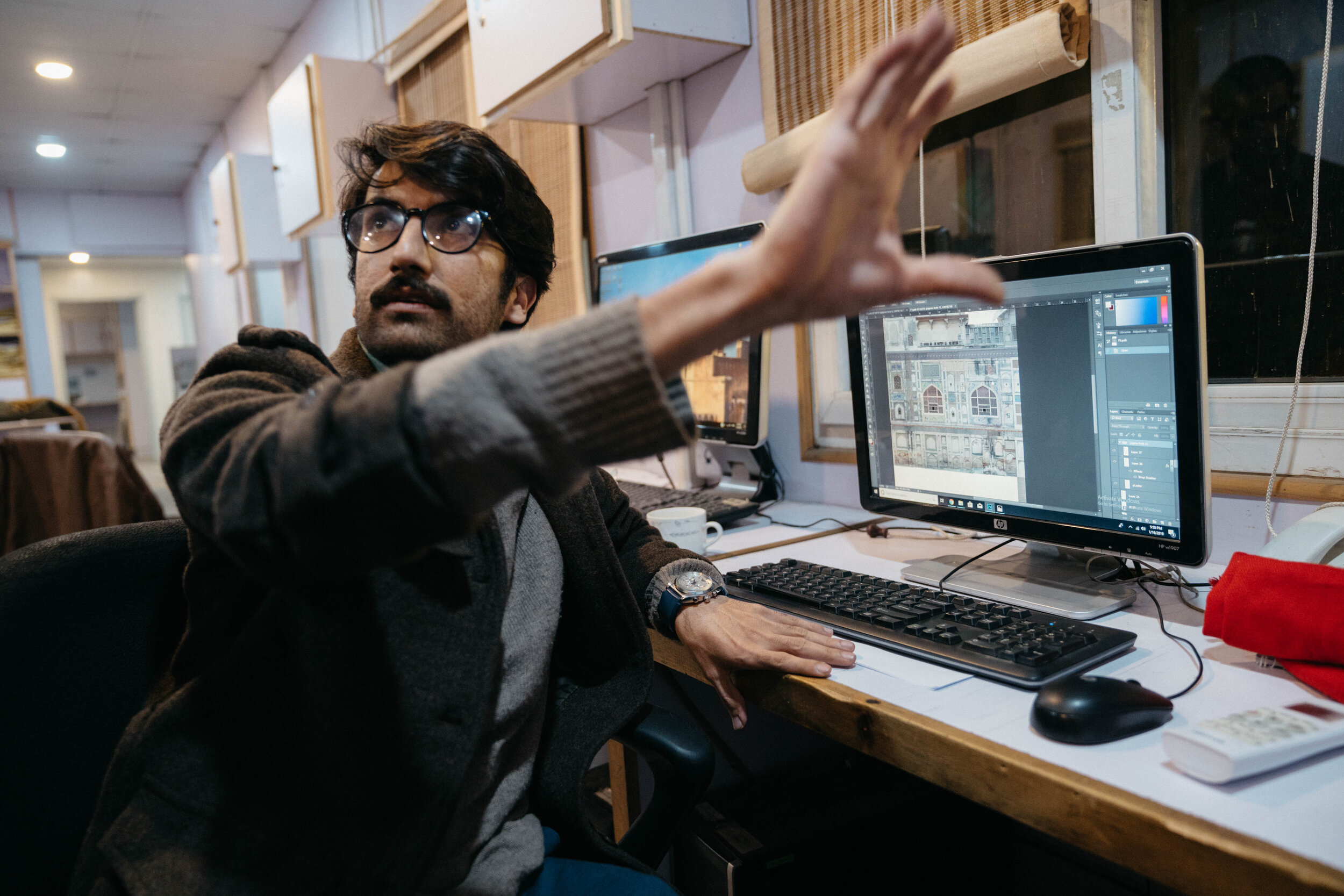Meet the young Pakistanis conserving Mughal heritage in Lahore (part 1)
Architects, art historians, engineers, fine artists, chemists, conservators, and ceramists make up the constellation of skilled young people working for the Aga Khan Trust for Culture (AKTC) on one of the largest restoration projects in Pakistan.
The 17th century Mughal-era Picture Wall in Lahore’s Walled City has been in a state of decay for over 100 years but thanks to the efforts of the Walled City of Lahore Authority, international donors and the infectious energy of this young team of conservators, the wall is being brought back from the brink.
The first phase of restoration of this UNESCO world heritage site - some 50 metres - was completed at the end of March 2019 and was inaugurated by Prime Minister Imran Khan. The remaining 400 metres of this awe-inspiring structure will take a further decade.
I spoke with some of the team working on this project to understand why this restoration work is so important to them and to Pakistan.
Sumera Murtaza, 27
Sumera, from Hunza, studied Architecture at the National University of Science & Technology in Islamabad. She also studied abroad in the US and Turkey. She has been working on the wall for just over a year. Currently, she is working with the drainage investigation team to understand its issues and is also creating a virtual plan of the original Mughal drainage system.
“I came to work on this project to give something back to the community. I think we can learn techniques from this wall which we can apply to today’s architecture. The techniques the Mughal’s used can help us create an architecture with very little environmental impact.
“Even with this restoration the wall will continue to deteriorate but ageing is fine. We have to accept it.”
“Our heritage gives us a sense of identity. We own this thing and we want to keep it alive.”
Zeina Naseer, 25
Zeina, a Lahori, works as a Conservation Scientist having studied Chemistry at Columbia University in New York. In her second or third year of her degree she was concerned about where it would take her feeling that science was a very rigid discipline. She was becoming more interested in history and culture and wanted to pursue a career that had a social and humanitarian benefit. Conservation work brought together her interests.
“I became interested in Islamic architecture and wanted exposure to Islamic history and all the crafts and techniques that were used, especially Mughal heritage so I was sure I wanted to come back to Pakistan after my studies. Living so far away from home increased my interest in my own culture and history.”
“Conservation is a very rewarding field but when it’s your own culture and heritage there’s a stronger attachment and a more personal element to it.
“Conservation is a new field in Pakistan. In neighbouring countries - like Iran, Afghanistan, Tajikistan and India - they mostly focus on reconstruction where they just replace what’s deteriorating with something new and not a lot of analysis and research is done on the historic materials. So science really comes into play when you focus on preservation rather than reconstruction. This is one of the first projects in Pakistan that is focused on preservation - meaning saving what remains - and this is the first project where science has really been involved.”
“Since the industrial revolution, modern science has of course done a lot of positive things, but in my eyes science has been quite destructive, especially to the environment and has destroyed much of the past. So now I believe it’s time for science to preserve the past.”
“It is really important for future generations to have a cultural awareness of their past. I don’t think the past or the present can be understood unless you contextualise it with respect to the past, especially if your past is so beautiful. The Mughal heritage we have is the pinnacle of our artistic and intellectual development. To bring that back, to remember that and to have a tangible physical embodiment of that past is really important for people to remember. It is a loud reminder of what we have lost.”
Emaan Shaikh, 28
Emaan qualified as Fine Artist majoring in painting at the National College Of Arts in Lahore. She was always interested in history and art and after graduating wanted to bring those two interests together. She heard about AKTC’s restoration of the Shahi Hammam and gained a training position there where she worked for a year on the conservation and restoration of the frescoes.
“I have a really intense and deep love of history, especially Pakistani history.”
“Most people don’t understand the importance of heritage, they don’t think it is important to preserve. But we should know where we’ve come from, we should know what our history is. Understanding where we have come from and what people before us have been through helps in my work, it helps the way I think, it helps with the way I am.”
“This wall teaches us about how things were once, that India and Pakistan were together, how the religions once existed and now there are so many divisions around religion. Knowing this adds to your knowledge and helps you to grow as a person. If a temple and mosque could live side by side then why can’t we in this day and age live side by side?”
Hussein Ali, 24
Originally from Multan, he has been living in Lahore for the last five years graduating with Bachelors in Architecture last year. Hussein is a Project Architect for AKTC. His primary task is to write proposals and test the drainage system of the Lahore Fort.
“During my studies I visited here many times. The scale and the beauty and the detail of the work being done on these sites inspired me to want to work here.”
“This work is important because the past is important. You cannot work for a future until you learn from your past. Preserving the past helps you to understand your history; where you are coming from and where you are going. It is important for us to know our history.”
Sobia Salman, 26
Sobia has been working on this project for eight months as a Conservator. She studied Fine Arts from the National College of Arts, Rawalpindi and specialises in miniature paintings. She learnt about the project from one of her friends and she became fascinated with the Picture Wall and the idea of working on a historical project. As a conservator she prepares and uses different chemical components to strengthen the surface decoration of the wall which is very fragile.
“The Mughals spent so much time to create such a beautiful thing we should conserve it. It is ours, it belongs to us so we should take care of it.”
Maryam Rabi, 31
Maryam studied Architecture at Beaconhouse National University, Lahore, thereafter gaining a masters in Historic Preservation Planning from Cornell University in New York. Now she works as a conservation architect for AKTC. Day-to-day Maryam spends her time documenting individual monuments as well as the surrounding urban areas using Electronic Distance Measurement devices and orthorectification technologies, supervising projects, and putting together documents describing conservation processes. She is currently working on a high-quality publication about the work of AKTC in Lahore which is expected available for purchase by the end of 2019.
Maryam was always drawn to historic environments and the manner in which they transform over time. Observing the deterioration of historical monuments in Pakistan motivated her to pursue a career in conservation and safeguard what remains of the country’s shared identity.
“Good conservation efforts do not take place in isolation. They not only involve individual historic buildings, monuments and landmarks, but also their immediate surroundings, and especially the communities that experience them on a day-to-day basis. They increase tourism and contribute to the economic wellbeing of societies. Pakistan has a wealth of historic structures that are underutilised and in dire need of rehabilitation. Only through their restoration and adaptive reuse can they be reintegrated into the urban fabric of the country.”
Ali Faraz, 26
Originally from Multan, Ali has been living in Lahore for six years. He studied architecture at the National College of Arts in Lahore and is now a Project Architect for AKTC working initially on the restoration of the Shahi Hammam and the Wazir Khan Mosque.
Using a Total Station machine and with the help of lasers, Ali captures the whole structures to produce 3D wireframe drawings from which he extracts profound architectural drawings like plans, elevations and sections. He is now working on the virtual restoration of the Picture Wall’s western facade. Ali makes virtual restorations which then act as guides for the physical restoration of the wall.
“It is important to bring the attention of local people to their own heritage and the history of their city. The basic intention is to preserve history. These are some of the very important structures of our history and they are in a very deteriorated condition. If we don’t generate awareness about these buildings, how are we going to preserve it for more than another 20 years?”
